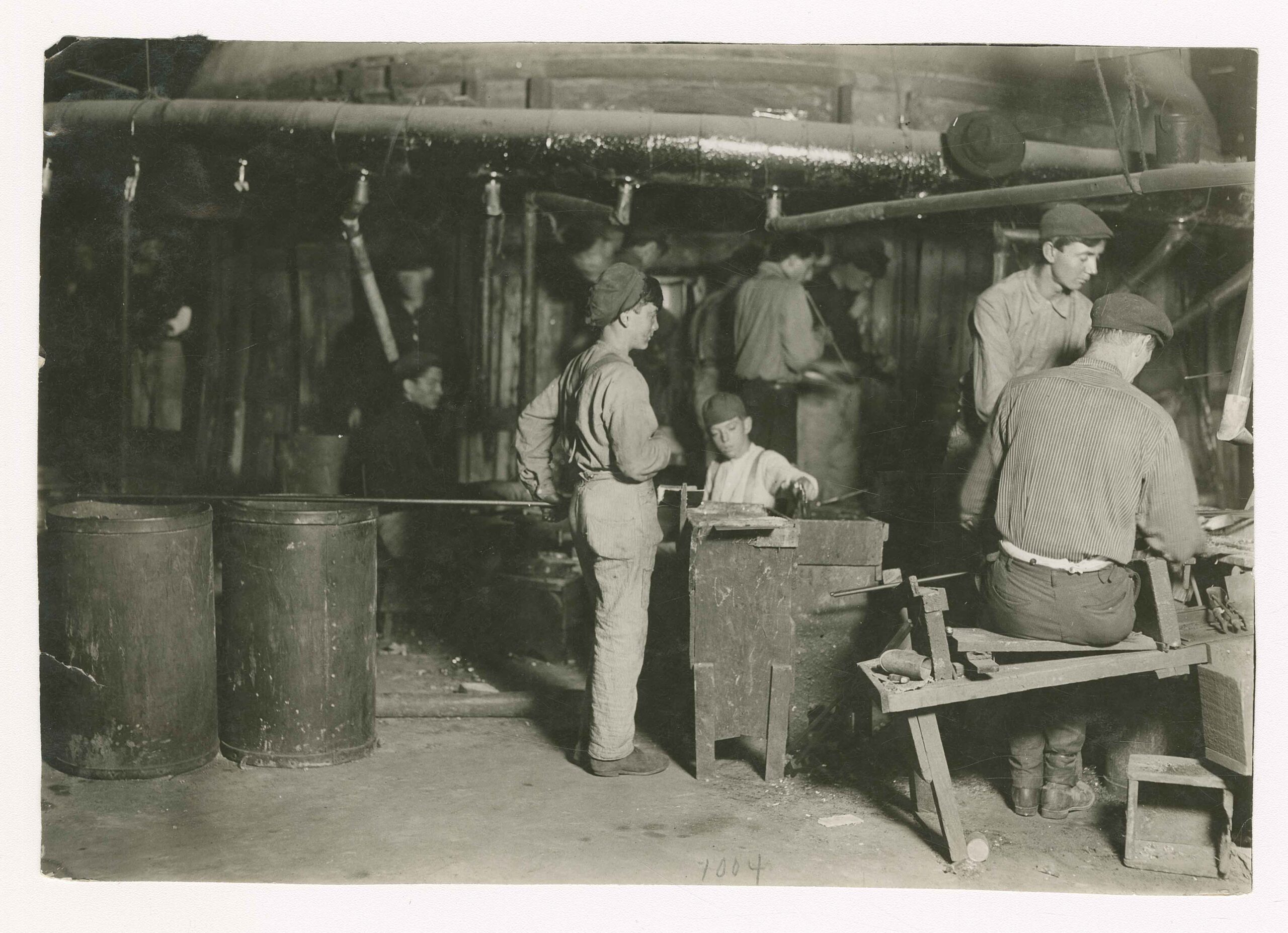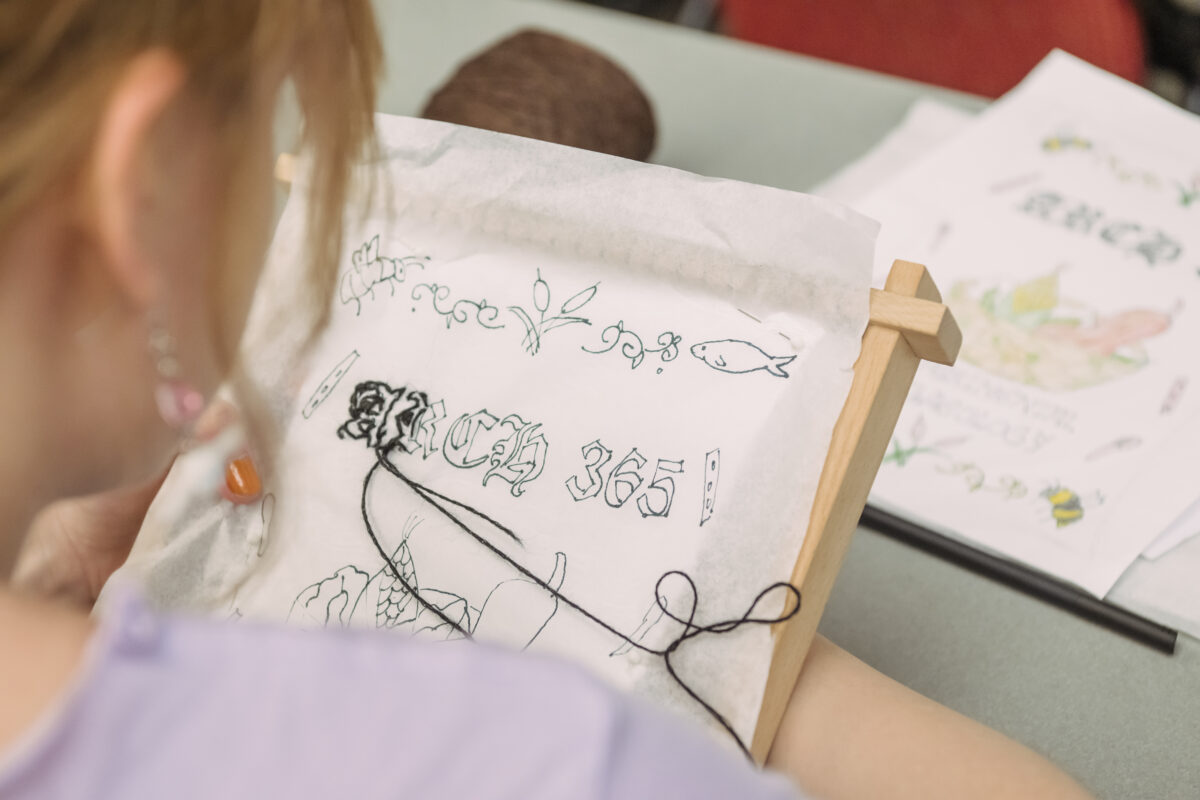One of the most influential sets of historical photos in UMBC’s Special Collections is an archive of more than 5,400 images documenting the harsh conditions of child laborers in early 20th-century America. Recently the team in Special Collections—which celebrates its 50th anniversary this year—undertook a massive project to digitize and rehouse the photos in more protective sheaths to help safeguard the images and the hand-written details on them.
The preservation effort gave UMBC student workers hands-on practice with handling the delicate photographs and allowed staff to dive deep into these historical records in order to comment on timely issues around current child labor conditions in the U.S. Their work will allow future students, faculty, and visiting scholars to access this important material for many years to come.
Preserving the photography of Lewis Hine
In the first article in this three-part feature, Rahne Alexander, M.F.A. ’21, writes about how photographer Lewis Hine secured a place in history as an investigative documentarian by observing and sharing the conditions for child laborers. From 1908 through 1930, Hine worked closely with the National Child Labor Committee (NCLC), an organization devoted to preventing the exploitation of children in the workplace. Hine crisscrossed the U.S. creating portraits of a diverse array of children working in fields and factories.
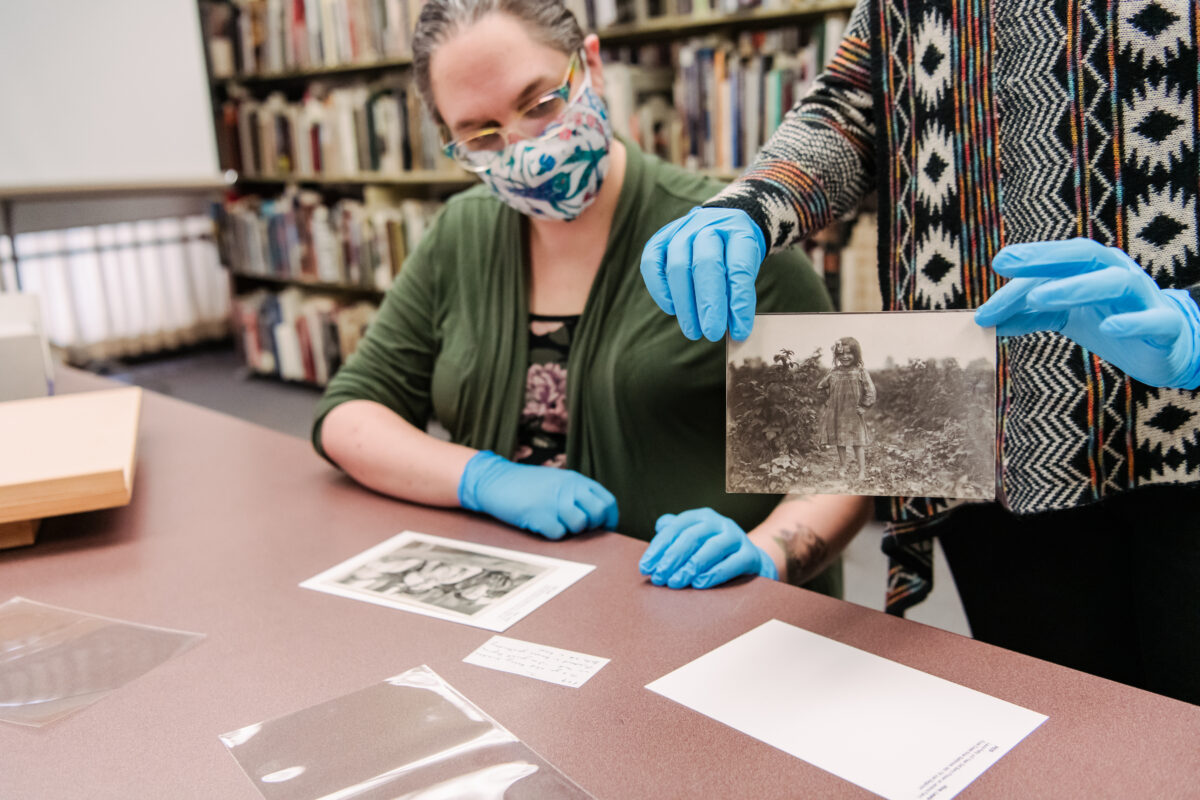
Handle with care
Uncovering the work UMBC students put into the project of preserving these historical photos, Catalina Sofia Dansberger Duque interview Special Collections interns Meredith Power ’21, history, a public history graduate student, and Gabe Morrison ’23, anthropology. Along with library staff members, these two worked diligently to ensure that the images of the families and children who lived through these harrowing work conditions are accessible to the public for research and learning.
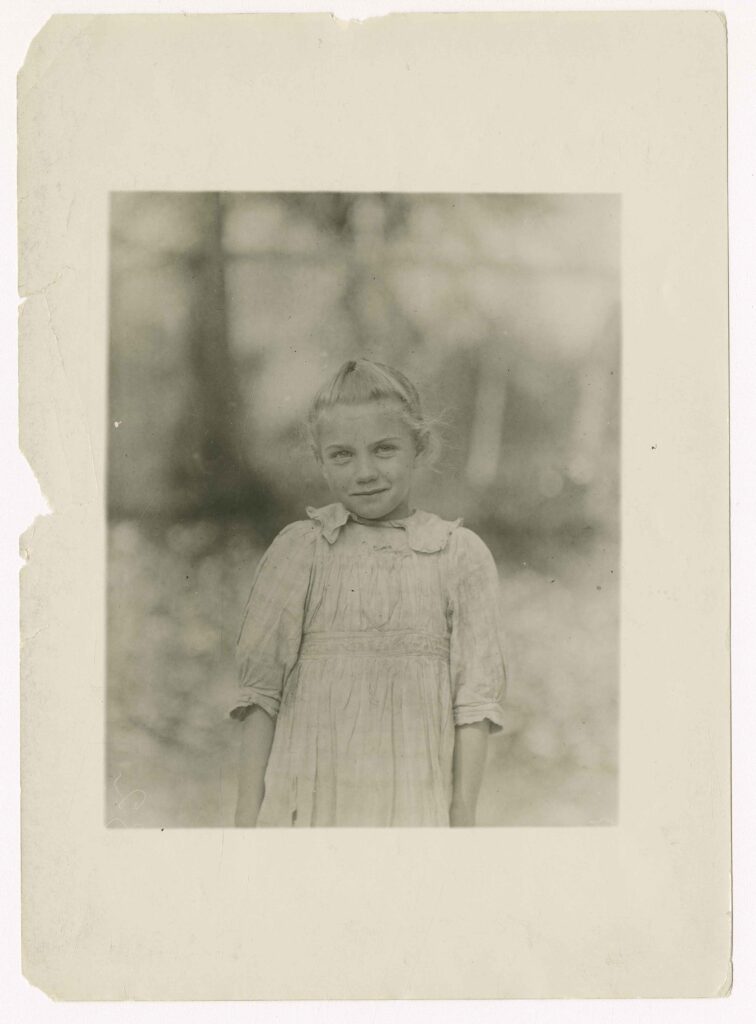
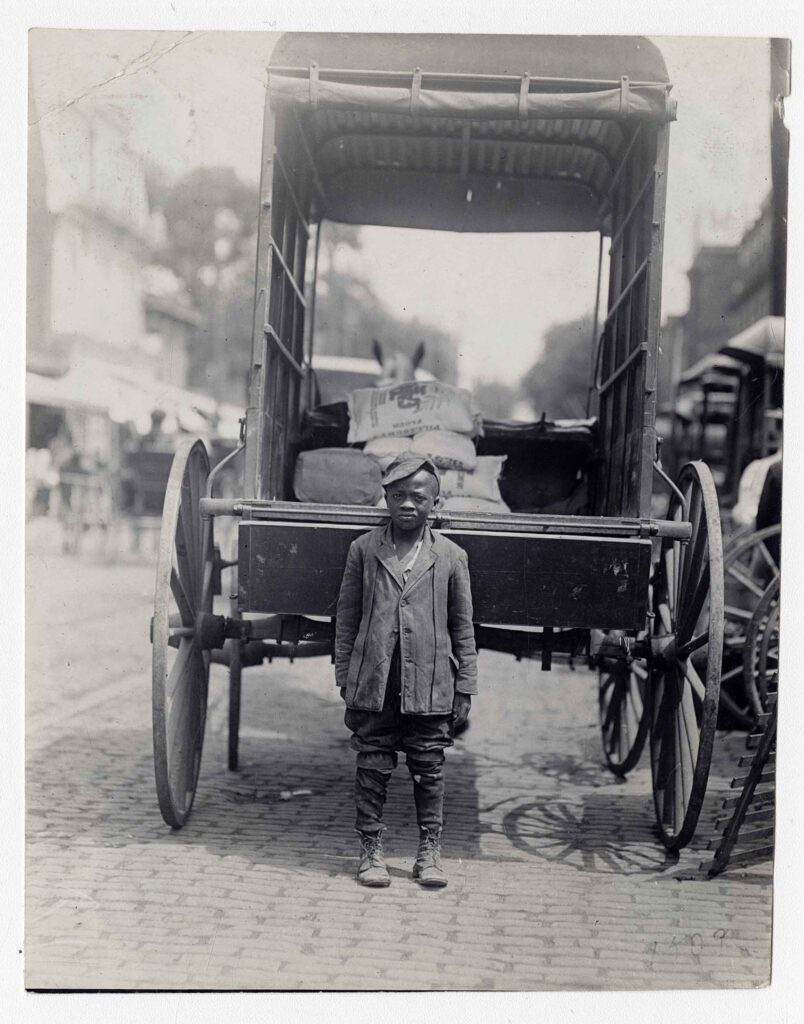
The U.S. has a child labor problem
Lastly, in a piece originally published in The Conversation, Curator of Special Collections Beth Saunders, writes, “As I’ve worked with this collection over the last two years, the social and political implications of Hine’s photographs have been very much on my mind. The patina of these black-and-white photographs suggests a bygone era—an embarrassing past that many Americans might imagine they’ve left behind. But with numerous reports of child labor violations, many involving immigrants, occurring in the U.S., along with an uptick in state legislation rolling back the legal working age, it’s clear that Hine’s work is as relevant today as it was a century ago.”
Tags: CAHSS, Fall 2023, Feature, History, Special Collections

